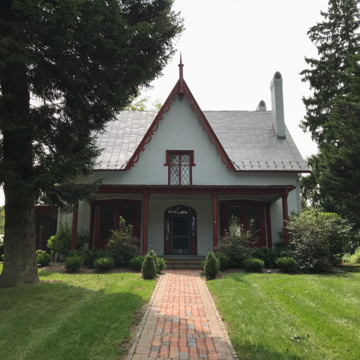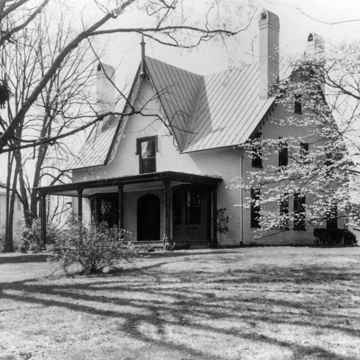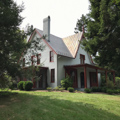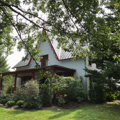The same far-sighted Presbyterians who had called on Thomas U. Walter to design their Greek Revival church (RB8), also chose to introduce Gothic Revival to the community in this cottage-style manse. They seemed to be aware of their innovation since one member noted in 1847, “[W]e hope that the architectural design, after the Gothic order, will enable us to present quite a model for imitation to other churches in the Valley.” It also presented a model for imitation to others in Lexington and a number of similar houses were built in the 1850s and 1860s. The manse can be related to several plates from Andrew Jackson Downing's mid-nineteenth-century pattern books, but it is not an exact imitation of any design. The building, with its prominent central gable and elaborate bargework, received various additions over the years, but was restored to its original character under the direction of Lynchburg architect Fauber.
You are here
Lexington Presbyterian Manse
If SAH Archipedia has been useful to you, please consider supporting it.
SAH Archipedia tells the story of the United States through its buildings, landscapes, and cities. This freely available resource empowers the public with authoritative knowledge that deepens their understanding and appreciation of the built environment. But the Society of Architectural Historians, which created SAH Archipedia with University of Virginia Press, needs your support to maintain the high-caliber research, writing, photography, cartography, editing, design, and programming that make SAH Archipedia a trusted online resource available to all who value the history of place, heritage tourism, and learning.









